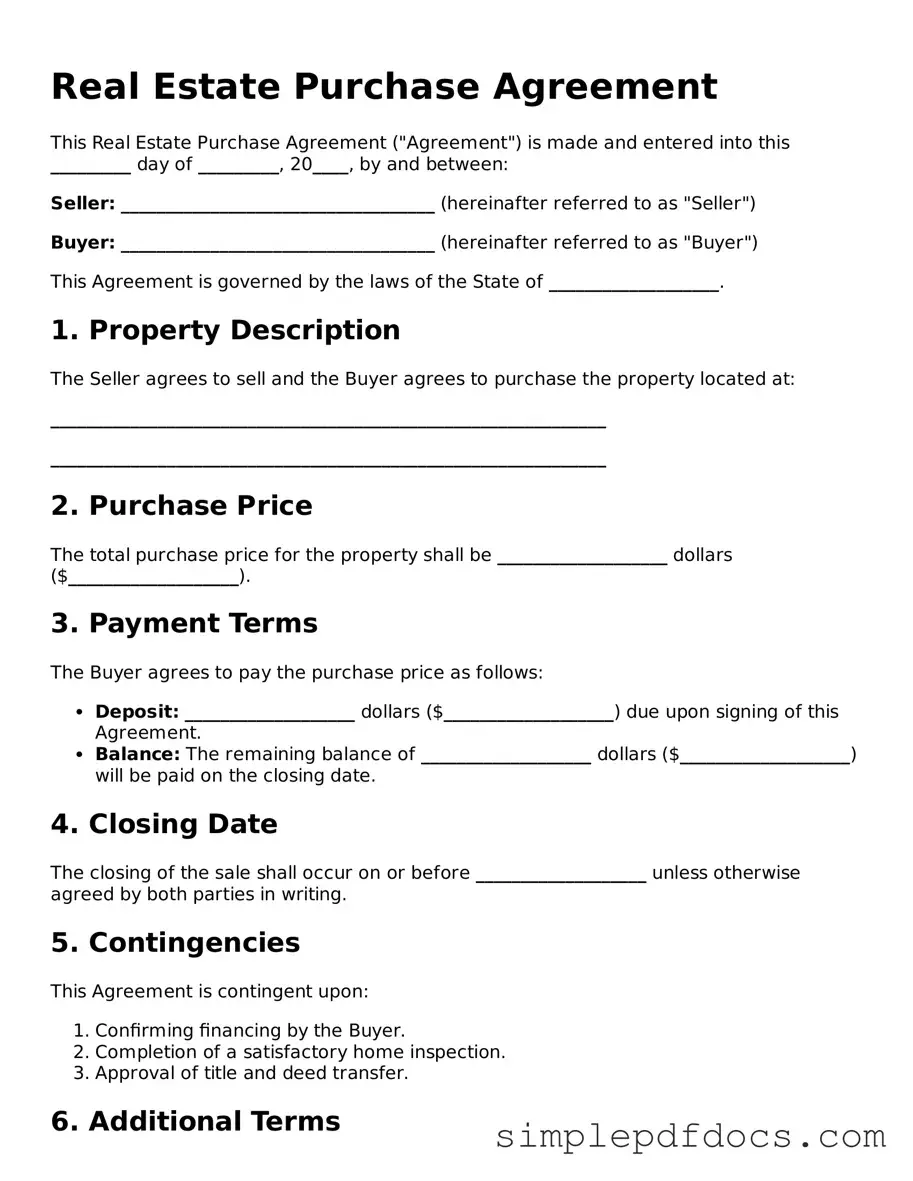Attorney-Approved Real Estate Purchase Agreement Form
A Real Estate Purchase Agreement is a legally binding document that outlines the terms and conditions under which a buyer agrees to purchase property from a seller. This form serves as a critical tool in the real estate transaction process, ensuring that both parties understand their rights and obligations. By clearly delineating the details of the sale, the agreement helps to facilitate a smooth transfer of ownership.
Get Document Here
